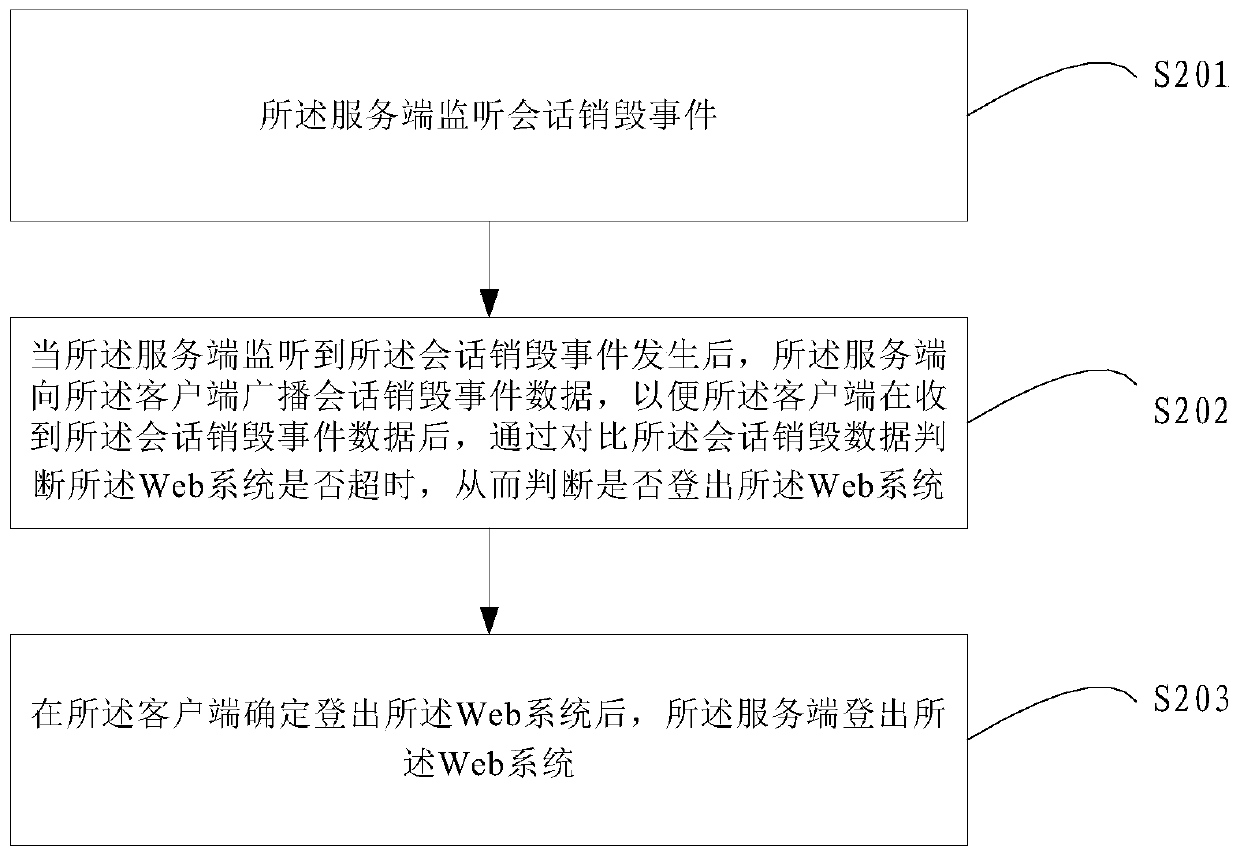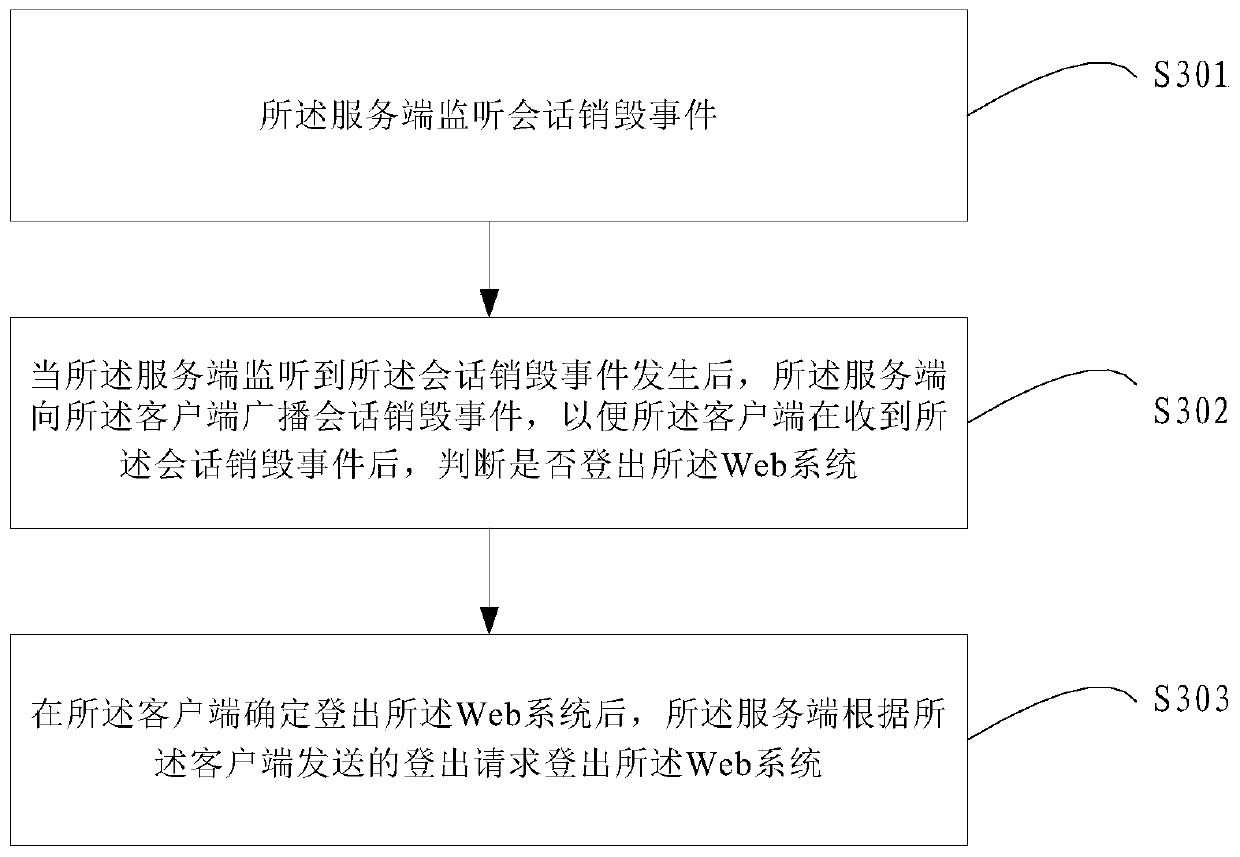Automatic logout method, device and system for Web system
An automatic, client-side technology, applied in the computer field, can solve problems such as occupying communication channels, wasting bandwidth, and wasting server resources, so as to achieve automatic login and reduce waste
- Summary
- Abstract
- Description
- Claims
- Application Information
AI Technical Summary
Problems solved by technology
Method used
Image
Examples
Embodiment 1
[0057] see figure 1 , which is a schematic flowchart of Embodiment 1 of the Web system automatic logout method provided in Embodiment 1 of the present application.
[0058] The method for automatically logging out of the Web system provided by this embodiment, when the Web system logs in, the client establishes a connection with the server, and establishes a session corresponding to the connection. The method includes:
[0059] S101: The server monitors a session destruction event.
[0060] When a user logs in to the Web system, the client establishes a connection with the server through a handshake. The client sends a service access request to the server for the first time, and the server establishes a session when receiving the service access request sent by the client. Based on the session mechanism, the client and the server monitor the interaction information between the client and the server in real time. If the client does not send any request to the server within a ...
Embodiment 2
[0066] see figure 2 , which is a schematic flowchart of Embodiment 2 of the Web system automatic logout method provided in Embodiment 1 of the present application. Compared to figure 1 , this embodiment provides a more specific method for automatically logging out of the Web system.
[0067] When the web system logs in, the client establishes a connection with the server, and establishes a session corresponding to the connection, then the method includes:
[0068] S201: The server monitors a session destruction event.
[0069] During specific implementation, when logging into the Web system, the client can send a request to the server through WebSocket to establish a connection with the server. After the client establishes a connection with the server, the server starts to monitor the session destruction event.
[0070] S202: After the server monitors the occurrence of the session destruction event, the server broadcasts the session destruction event data to the client, s...
Embodiment 3
[0075] see image 3 , which is a schematic flowchart of Embodiment 2 of the method for automatically logging out of the Web system provided in Embodiment 1 of the present application. Compared with figure 1 , this embodiment provides a more specific method for automatically logging out of the Web system.
[0076] When the web system logs in, the client establishes a connection with the server, and establishes a session corresponding to the connection, then the method includes:
[0077] S301: The server monitors a session destruction event.
[0078] S302: After the server detects that the session destruction event occurs, the server broadcasts the session destruction event to the client, so that the client can determine whether to log out after receiving the session destruction event The web system.
[0079] After the server detects that the session destruction event occurs, the server broadcasts the session destruction event to the client. After the client receives the ses...
PUM
 Login to View More
Login to View More Abstract
Description
Claims
Application Information
 Login to View More
Login to View More - R&D Engineer
- R&D Manager
- IP Professional
- Industry Leading Data Capabilities
- Powerful AI technology
- Patent DNA Extraction
Browse by: Latest US Patents, China's latest patents, Technical Efficacy Thesaurus, Application Domain, Technology Topic, Popular Technical Reports.
© 2024 PatSnap. All rights reserved.Legal|Privacy policy|Modern Slavery Act Transparency Statement|Sitemap|About US| Contact US: help@patsnap.com










